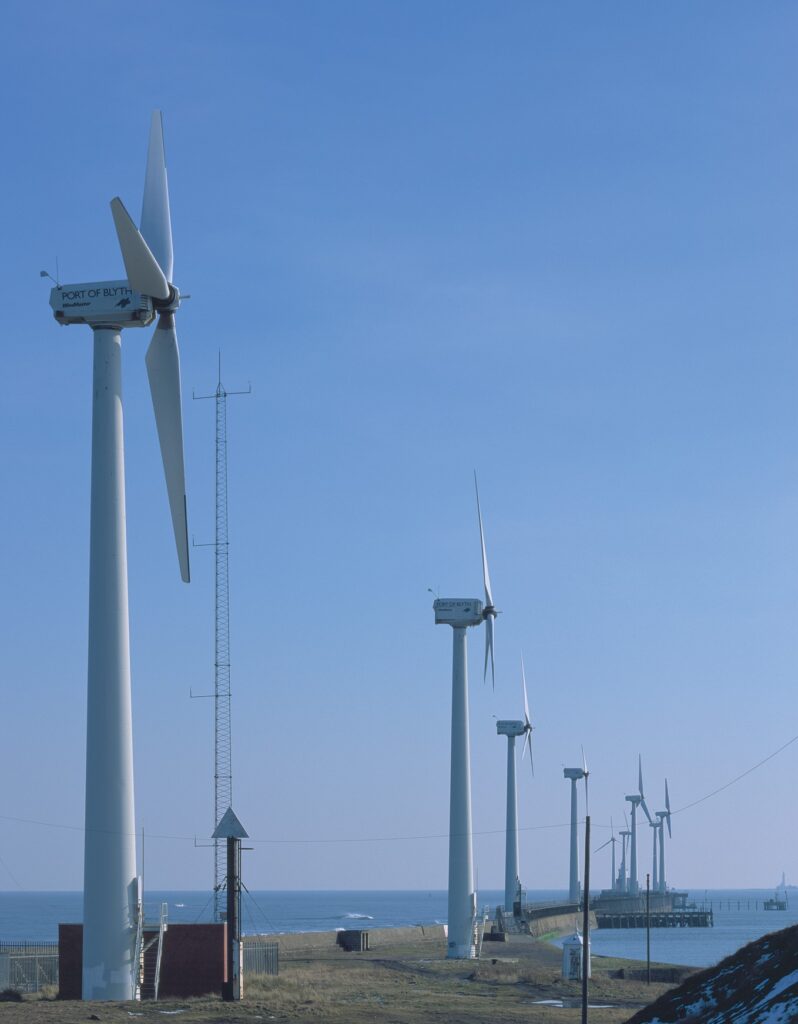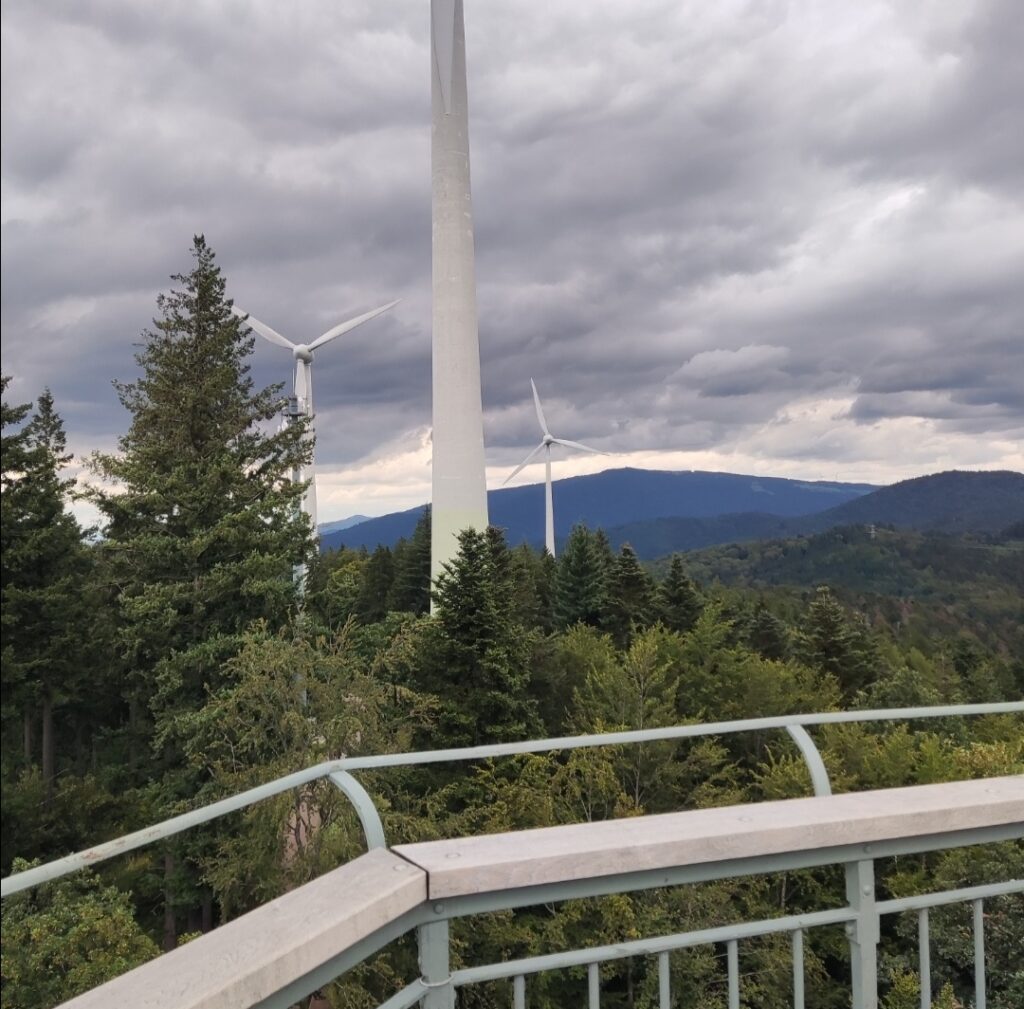What is Wind Power?
Wind power is a renewable source of energy that harnesses the kinetic force of natural air flows. To do this, turbine blades are angled so that the passing winds push against them and transfer their energy into rotational movement. This movement then drives a generator that transforms the kinetic energy into electrical power. Similar processes, minus the last step, have been utilised for millennia for purposes including milling grain, pumping water, and, in their simplest form, navigating oceans. Since the 1970s, however, the technology’s potential to generate electricity at scale has led to a gradual modern resurgence of wind power as a useful tool in the global transition towards cleaner and greener energy (Chiras, 2010). To understand how Newcastle University is responding and contributing to this transition, I’ve drawn on the expertise of Professor of Offshore Engineering, Zhiqiang Hu, to explore some of the exciting projects in progress across our organisation.

The University’s wind research and collaborations
Our University has a range of talented researchers working across a variety of wind power technologies and among of the most promising of these is offshore wind generation. Placing wind turbines offshore (sometimes a long way out at sea!) allows them to be far larger than their land-based siblings which boosts generation capacity while avoiding taking up precious space on land. As a result, the offshore wind industry is developing quickly as an important way to meet the global demand for decarbonisation. This is creating a wealth of challenges and opportunities for those working in the sector and Newcastle University has a strong position within this dynamic landscape thanks to two key factors.
Firstly, the University has attracted attention from a variety of leading energy and engineering companies thanks to both our wealth of specialist knowledge and the forward-looking approach to sustainability that we take throughout our institution. Our researchers are working on a variety of cutting-edge themes, specialising particularly in the strength and integrity of wind turbines, their operation and maintenance, and developing ways to store their excess generation as hydrogen! Meanwhile, to help power this research, the University has entered a long-term deal to acquire wind power from Statkraft – a major European wind power supplier.
Secondly, the North-East is also a busy place for offshore wind power industrially, due both to the region’s existing maritime infrastructure and the vast wind farm being developed at nearby Dogger Bank in the North Sea. This wind farm, projected to be the largest in the world, has created a strong local offshore wind power supply chain, further attracting investment and collaboration with leading companies eager to work with local centres of expertise such as our University. These factors have led to a variety of exciting projects collaborating with industry including:
- Professor Hu’s work to collaborate with colleagues and companies, including ORE Catapult, Hywind Scotland, and Equinor, to develop technologies (including using AI (Chen et al., 2021)) that will help maintain floating wind turbines at sea.
- The University’s Hydrodynamics Laboratories in the Armstrong Building have been working with Balmoral to develop their HexDefence technology to avoid scouring issues at the base of offshore turbines (read more about scouring here (Zhang et al., 2023)).
- Newcastle University’s Marine Zero PhD Centre has been supporting TechnipFMC on a project to develop dynamic cable monitoring technology to ensure that power gets back to land safely from the turbines out at sea.

Impact beyond the University
The varied partnerships and research projects underway at our University are creating opportunities and positive change within our organisation, but the work that’s being done here is having impacts far beyond the streets of our campus. Here, the University’s work contributes to positively impacting the emissions profile of the entire North East, proving the possibilities of decarbonising UK higher education, and providing vital knowledge that will contribute to the global green energy transition!
Enormous thanks to Professor Hu for the expert insight he provided for this article, you can see more of his work here. Finally, to stay fully up to date on sustainability news across our University, keep checking our regular blogs and contact us at the Sustainability Team to be added to our monthly newsletter!
References
Chen, P., Jia, C., Ng, C., and Hu, Z. (2021) ‘Application of SADA method on full-scale measurement data for dynamic responses prediction of Hywind floating wind turbines’, Ocean Engineering. Volume 239.
Chiras, D. (2010) Wind power basics: a green energy guide. New York: New Society Publishers.
Zhang, F., Chen, X., Yan, J., and Gao, X. (2023) ‘Countermeasures for local scour around offshore wind turbine monopile foundations: A review’, Applied Ocean Research. Volume 141.
